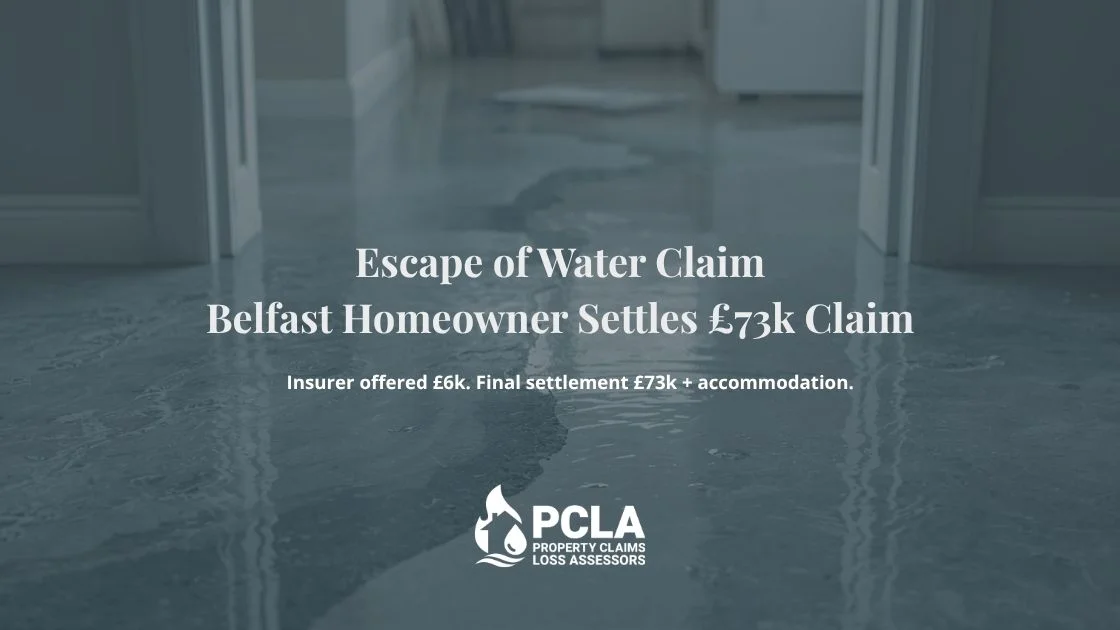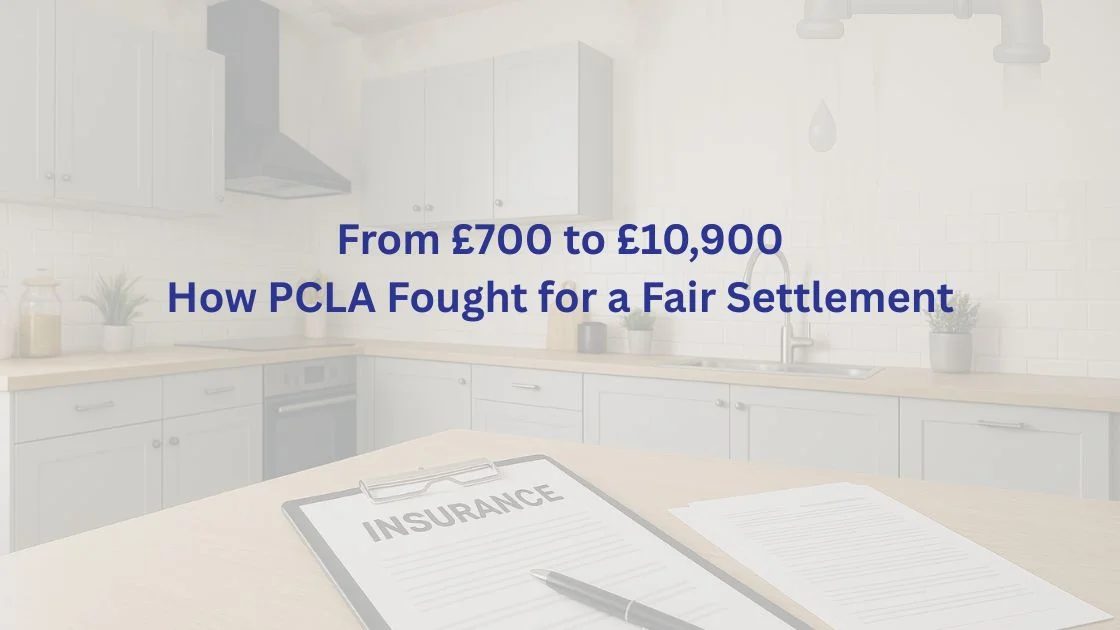With rising water levels posing an increasing threat to homes across the UK, it’s crucial to understand how flood insurance can protect your property. This article will explore the peril of flooding, the coverage typically provided by a standard buildings home insurance policy, and the exclusions you need to be aware of. We will also discuss how Property Claims Loss Assessors (PCLA) can support homeowners in times of need.
Flooding is one of the most devastating natural disasters a homeowner can face. With unpredictable weather patterns becoming more frequent in recent years, the risk of floods has become a growing concern for homeowners across the UK.
A flood can cause widespread damage, from structural issues to the destruction of personal property, leaving you in a vulnerable position both emotionally and financially.
When you purchase a buildings home insurance policy, you expect it to cover your home for such perils. However, not all policies offer the same protection, and understanding what your policy covers, especially regarding flood damage, is crucial to ensuring your home and finances are adequately protected.
What is Flooding?
Flooding occurs when there is an overflow of water that submerges land or property. Floods can result from various factors, including heavy rain, rivers overflowing, storms, melting snow, or broken dams. In the UK, flooding is one of the most common natural disasters, and it can affect homes regardless of location, though properties near rivers, lakes, and low-lying areas are at greater risk.
Flood damage can affect every part of your home, including the foundation, walls, flooring, and electrical systems. The severity of the damage depends on the amount of water, the speed at which it arrives, and how long it stays. Without proper coverage, dealing with flood damage can become an overwhelming financial burden.
Flood Coverage in Standard Home Insurance Policies
What’s Typically Covered?
A standard buildings insurance policy often includes coverage for structural damage to your home caused by flooding. This generally means that if a flood causes damage to the physical structure of your home—such as the walls, floors, roof, and foundation—your insurer may cover the cost of repairs. Coverage can also extend to permanent fixtures such as kitchens and bathrooms.
If your home is rendered uninhabitable due to flood damage, your policy may also cover the cost of temporary accommodation until your property is safe to return to. This aspect of the policy is known as alternative accommodation cover and can be a lifeline during long repair processes.
Real-Life Example
Imagine your home is situated near a river, and after weeks of heavy rainfall, the river bursts its banks, flooding your home. The floodwaters seep into the ground floor, causing extensive damage to the floors, walls, and electrical systems. In this case, your buildings insurance should cover the repairs to your home’s structure and essential systems, as well as the costs of temporary accommodation while your home is being restored.
What’s Not Covered?
While a standard buildings insurance policy will often cover the structural damage caused by floods, there are several exclusions and limitations that homeowners must be aware of:
- Contents Insurance: Standard buildings insurance only covers the structure of your home. If you want protection for your personal belongings, such as furniture, electronics, and clothing, you will need separate contents insurance.
- Wear and Tear: If the flood damage is exacerbated by poor maintenance or pre-existing conditions (such as a poorly maintained roof or inadequate drainage systems), your claim may be denied. Insurers expect homeowners to take reasonable steps to keep their property in good condition.
- High-Risk Areas: Homes in areas prone to flooding may face higher premiums or may be excluded from flood coverage altogether. If you live in an area with a history of frequent flooding, you may need to seek specialised flood insurance.
- Gradual Damage: If water has been slowly leaking into your home over time and causes damage that eventually leads to flooding, this might not be covered. Insurance policies typically exclude gradual damage that could have been prevented with proper maintenance.
- Additional Costs: While your insurance may cover the structural repairs, some additional costs, such as professional cleaning, debris removal, or rebuilding in compliance with new flood-resistant regulations, may not be included in a standard policy.

Exclusions to Watch Out For
Understanding the exclusions in your policy is essential to avoid surprises when making a claim. Some common exclusions include:
- Fences, Gates, and Hedges: These are typically not covered in flood damage claims, so if your garden is damaged by floodwaters, you may have to cover these repairs out of pocket.
- Unoccupied Homes: If your home is left unoccupied for an extended period, typically more than 30 to 60 days, flood coverage might be void unless specific precautions were taken, such as turning off utilities or draining the pipes.
Flood Risk and High-Risk Areas
If your home is in a flood-prone area, you may face additional challenges when it comes to insurance. Insurers use flood risk assessments to determine the likelihood of your home being affected by flooding. If your property is deemed high risk, it can be more difficult or expensive to obtain insurance.
In response to these challenges, the UK government and insurance industry have created initiatives like Flood Re, which is designed to make flood insurance more affordable for high-risk properties. However, even with this assistance, homeowners in high-risk areas must be diligent about ensuring they have adequate flood coverage.
Protecting Your Home in High-Risk Areas
To lower the risk of flood damage and ensure you remain insurable, it’s vital to take preventative measures. This can include installing flood barriers, improving drainage systems, and raising electrical sockets above likely flood levels. Not only will this reduce the risk of damage, but it could also lower your premiums or make it easier to obtain coverage.
Making a Flood Damage Claim
Making a claim for flood damage can be a stressful and complicated process. Insurance companies require detailed information about the extent of the damage, including photographic evidence, repair estimates, and sometimes even professional assessments from surveyors or contractors.
They will often send their own loss adjuster to assess the situation, which means that you need to be prepared to provide all necessary documentation and answer their questions. This can be a daunting experience, especially when you’re dealing with the emotional toll of seeing your home devastated by flooding.
Navigating the paperwork, ensuring you meet deadlines, and understanding the terms of your policy can add to the challenge, making it crucial to be well-prepared or have expert guidance during the claims process.
How PCLA Can Help
As a homeowner, making an insurance claim after a flood can feel overwhelming. This is where Property Claims Loss Assessors (PCLA) can be invaluable. At PCLA, we specialise in representing homeowners like you when making a claim. Unlike the insurance company’s loss adjuster, who works for the insurer, we work for you.
Our job is to ensure that you receive the full amount of compensation you’re entitled to under your policy. We handle the entire claims process, from assessing the damage and submitting the necessary documentation to negotiating with your insurer. By letting us handle the details, you can focus on rebuilding your home and getting your life back on track. Visit us at pcla.co.uk for more information on how we can assist you with your claim.
Flood Preparedness
While it’s impossible to prevent a flood, there are steps you can take to minimise the potential damage to your home. Installing flood defences such as sandbags or barriers, ensuring that drainage systems are clear, and moving valuable items to higher ground during flood warnings can all help to mitigate damage.
Additionally, creating a flood plan can be a practical step towards ensuring your family’s safety. This should include an evacuation plan, a checklist of essential items to take with you, and the contact details of your insurer and emergency services.
Conclusion
Flooding is a peril that no homeowner wants to face, but being adequately insured and prepared can make all the difference. A standard buildings home insurance policy provides crucial coverage for structural damage caused by floods, but it’s important to be aware of the exclusions and limitations that may apply. By understanding your policy, taking preventative measures, and seeking expert help when making a claim, you can protect your home and your finances from the devastating effects of flooding.
If you do find yourself needing to make a flood damage claim, remember that PCLA is here to help you through the process. With our expertise on your side, you can ensure you receive the compensation you’re entitled to and focus on restoring your home.



